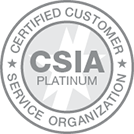Association meeting and event planners must look ahead to ease attendees’ concerns for in-person event safety
After association events shuttered in 2020 and much of 2021, event attendees learned a new way to network, attending virtual events in record numbers. Now, as society starts to breathe life into the events industry once again, association meeting and event planners are faced with sometimes reluctant audiences that want to be sure events are taking precautions that will ensure their safety and provide options for those who may decide that in-person isn’t on their horizon.
Engaging the Masses
In the past, potential attendees could readily expect meetings and events to focus on programming and continuing education credits. However, post-COVID-19, expectations have been knocked off balance, leading to perhaps the biggest symptom of reluctance—uncertainty around what to expect. To remedy uncertainty, an association must first lean into communication.
Conducting a member survey, for example, remains an effective strategy to gather insights and data when approaching an in-person event. A survey flags specific concerns members may have pertaining to post-COVID-19 practices such as social distancing and sanitation. Moreover, a survey affords event planners opportunities to view any safety precautions they may have missed.
Thinking Outside the Socially Distanced Box
Once event planners have collected all the necessary data, they can then add another remedy for reluctance—action.
Safety measures, including guidelines for social distancing and proper masking requirements can bring relief to attendees who are worried about the safety of an event. However, it’s paramount event planners keep in mind the varying restrictions between cities, counties, and even states that may affect the event.
Once put into place, communications and safety measures have shown their usefulness in bringing life back to in-person events.
For example, in March 2021, the National Air Duct Cleaners Association (NADCA) was among the first to return to an in-person event. For NADCA, a return to an in-person event was essential to revive the camaraderie for which the association’s events are known.
NADCA’s meeting manager, Ashton Hald, CMP, DES, understood safety measures were critical to not only hold the event, but build trust for potential attendees. Months prior, she and NADCA’s events team, with a combination of recommendations from the U.S. Centers for Disease Control and Prevention, local requirements, and their own experiences during the worst of the COVID-19 pandemic, created circumstances to set the event up for success.
First, Hald and the team communicated the planned safety measures that set expectations with attendees.
“We had put out our safety measures and requirements for the event, and people registered with those measures and requirements in place,” Hald said.
NADCA’s safety measures included an attendance cap of 250 people, daily self-certification health questionnaires and temperature checks required for entry, sanctuary seating, travel zones, and contactless food and beverage service, in addition to masking and social distancing requirements.
As the event drew nearer, the proliferation of COVID-19 vaccines benefitted everyone and restrictions eased as a result, leading NADCA to question whether their previously stated safety requirements would have to change.
NADCA and Hald had a decision to make: follow suit or stick with the plan. They chose to stick with the plan.
“If we changed our safety requirements after they had already been communicated, how would our attendees feel, who maybe felt comfortable enough to register because of those safety requirements?” said Hald.
And, since NADCA had already taken action and communicated with those potential attendees, they remained confident their approach would remain effective.
The Rise of Hybrid Events
Still, success has many faces, and while the COVID-19 pandemic impacted much of what was once considered normal, it forced associations to adapt, with serendipitous results, inserting a third remedy for reluctance—flexibility.
And that flexibility manifested most notably in hybrid events. These events became best suited for associations that must deal with high demand but low capacity limits. Or, for associations that have discovered a greater desire for digital components from potential attendees.
The Controlled Release Society (CRS) was one such association. According to Gabrielle Copperwheat, CRS Executive Director, the society reached a wider market than it believed it could ever reach.
“Because of the accessibility that was put forth,” said Copperwheat, “those scientists from around the world are now part of our universe.”
For CRS, hybrid provided a mechanism to offer the same in-person experience to a wider virtual audience. And, they had such success, the virtual is no longer an option, but a necessity.
“It’s not just what are we doing in 2021 or 2022. We’re redefining our meetings entirely,” said Copperwheat.
Download AH’s ebook, Virtual Events 2.0, the next-generation guide to virtual and hybrid events for association leaders and meeting planners.




